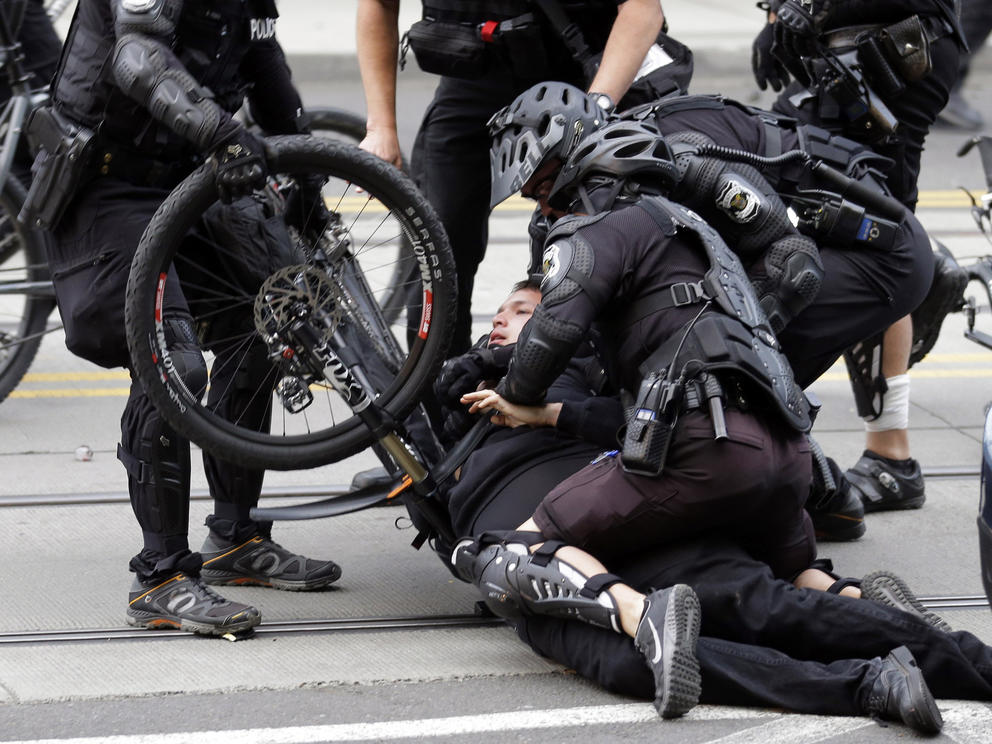Podcast | Bikes become a go-to instrument for police enforcement
In Seattle and across the country, police have adopted the use of bikes for crowd control. It’s become big business and a big concern.

Police officers press a bicycle into a man as they arrest him during a May Day anti-capitalism march, Friday, May 1, 2015 in Seattle. (Ted S. Warren/AP)
Seattle was an early adopter of the use of bicycles in law enforcement — especially as a form of crowd control. The SPD first put cops on bikes in 1987, but the “Battle of Seattle” WTO protests in 1999 began an era of more aggressive tactics.
In recent years, bike cops have routinely anchored crowd-control efforts at events or demonstrations. Now, the use of bikes, and the crowd-control methods Seattle cops developed, have spread across the country.
Listen to Crosscut Reports on Apple Podcasts, Spotify, Amazon or wherever you get your podcasts.
This kind of bike policing seems to be here to stay, but there are questions about its use. Freelance investigative reporters James Stout and Jordan Gass-Pooré asked some of those questions in a joint project with Crosscut and Type Investigations. Among other things, the reporters examined the history of SPD bike usage as well as dozens of use-of-force complaints involving Seattle police officers and their bicycles filed during the social justice protests of 2020.
For this episode of Crosscut Reports, host Sara Bernard talks with Stout and Gass-Pooré about their findings, and about how SPD might deal with the problem: The latest report from Seattle’s Office of Inspector General on the SPD response to the 2020 protests has called for an overall apology and a reevaluation of bike-policing tactics.



